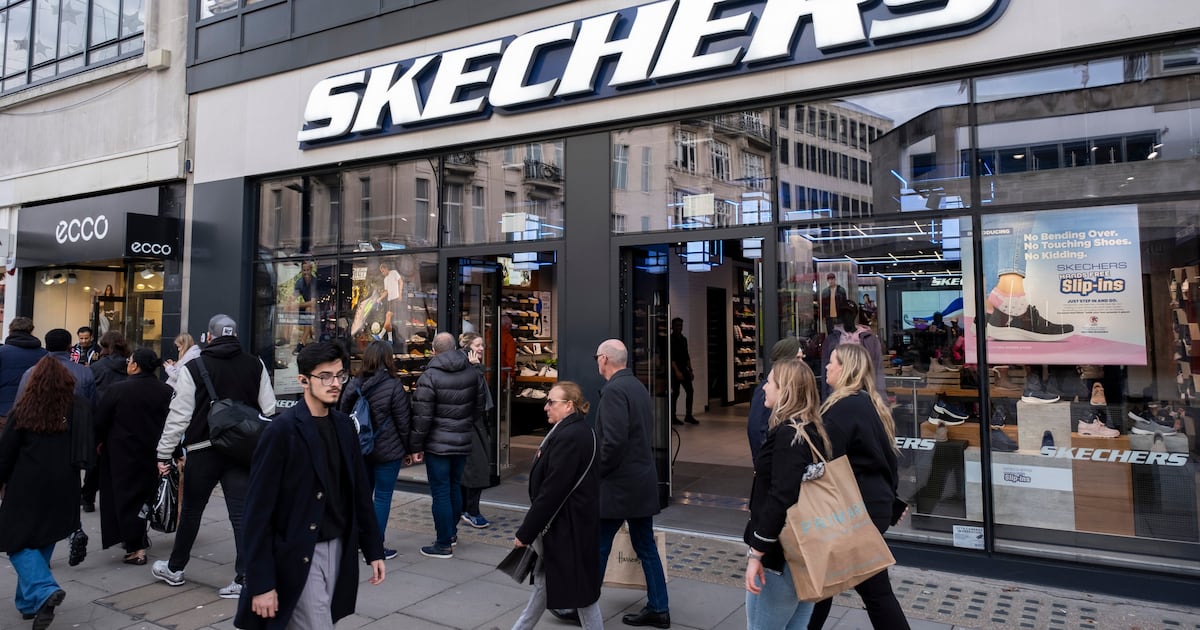Brazilian private equity firm 3Gâs $9.4 billion acquisition of the sneakers brand Skechers â the second-largest fashion deal ever, after LVMHâs 2020 takeover of Tiffany â came as a complete surprise to investors and industry observers.
The buyer and seller make for an unlikely pair: 3G is best known for snapping up Burger King, Tim Horton and Kraft Foods (it sold its stake in the latter last year); it has never operated a fashion brand. And Skechers, though publicly traded, is controlled by founder and chief executive Robert Greenberg, who is in his mid-80s, and had given no indication he was looking to sell. (Heâll stay on to run Skechers after the deal is complete, the companies said).
Skechers also doesnât fit the profile of other recent deals, which outside the luxury space have often involved brands that are struggling, or even in bankruptcy. Skechers, however, had been on a growth streak, posting record sales of nearly $9 billion last year, with both wholesale and direct channels increasing by double digit percentages.
âThis came out of the blue,â said Needham analyst Tom Nikic.
Why did Skechers sell?
In a press release, both companies praised the other for their track record of success, but offered few specifics about the rationale for the deal. (Skechers declined to comment for this story.)
Analysts noted that, while Skechers has been on a hot streak, the Trump administrationâs tariffs had clouded the comfort sneaker brandâs future. Last month, the company said sales rose 7 percent in the first quarter, but pulled its full-year outlook, citing âmacroeconomic uncertainty stemming from global trade policies.â
Shares had fallen 40 percent from their January peak, though they made up much of that ground on Monday after 3G went public with its $63 per share offer.
Still, Skechers is far from the only fashion company to see its fortunes turn due to the tariffs. And though it makes most of its shoes in Asia â 38 percent of US sales are for products made in China, according to Bank of America â in other ways the brand is insulated from Trumpâs trade war. Two-thirds of Skechers sales came from outside the US last year, split between Asia-Pacific ($2.4 billion), EMEA ($2.2 billion), and China ($1.2 billion).
âCompanies like Skechers that have so much of their business outside the US â you can view them as strong because they can position their business elsewhere and leverage their other stores,â said Jessica Ramirez, co-founder and managing director at The Consumer Collective. âIf youâre going to raise price points in the US, you may not do it in Europe or in Asia, so you have more agility to handle tariffs.â
Going private has its advantages in turbulent times. Unlike most of its competitors, Skechers can work through the impact of tariffs and invest in pivoting its supply chain without needing to give quarterly updates on its progress to investors.
Why did 3G buy?
While itâs rarely been known for trendiness, Skechers has quietly solidified its position as a leader in affordable, comfortable footwear. The brandâs product range spans orthopedic walking shoes, utilitarian slip-ons and colourful lifestyle sneakers, including light-up styles that have made it popular among children.
More recently, Skechers has emerged as a player in the sports world, too. In recent months, the brand has expanded into basketball and soccer, signing marquee athletes like FC Bayern Munichâs Harry Kane and NBA stars Julius Randle and Joel Embiid. Itâs also leaned into pop culture with campaigns featuring Snoop Dogg and Martha Stewart.
That kind of long-term investment, Ramirez said, is likely why Skechers was able to fetch a $9.4 billion price tag â thatâs about 13 times its net earnings in 2024 â and what makes it such an exceptional acquisition target.
How 3G â best known for its blockbuster deals in the restaurant sector â will approach its first major fashion buy remains to be seen. But some analysts have signaled cautious optimism that the firm may apply its signature cost-cutting playbook to Skechers.
â3Gâs playbook of boosting margins through cost-cutting and efficiencies certainly creates the likelihood that we will see Skechers come public again in the distant future,â TD Cowen analyst John Kernan wrote in a note Monday.
The deal also signals the footwear categoryâs general resilience compared to other softlines categories, Kernan added, pointing to the strength of peers such as On Running, Hokasâ owner Deckers and Amer Sports, âthough we donât see them as private equity takeouts for various reasons,â he wrote.
âThis [deal] speaks to [the fact] that footwear is typically an area that has stronger resilience, and often tends to get through crises in a better state or bounce back quicker,â said Sonia Lapinsky, partner and managing director at Alix Partners.
Will there be more deals?
Between Pradaâs $1.4 billion acquisition of Versace in April and the Skechers deal, fashion is seeing an unusual run of blockbuster deals. Experts say thatâs unlikely to continue.
The same uncertainty upending apparel companiesâ finances is keeping many potential buyers on the sidelines. Acquirers like some certainty before committing billions of dollars. But forecasting everything from consumer demand to manufacturing costs to interest rates is extraordinarily difficult right now.
âIâm sure 3G has its reasons for buying the company but generally speaking itâs hard to figure out the true profitability of these companies given how rapidly things can change from tariffs and consumer sentiment perspective,â said Nikic. âItâs not a very easy environment right now to buy a business.â

